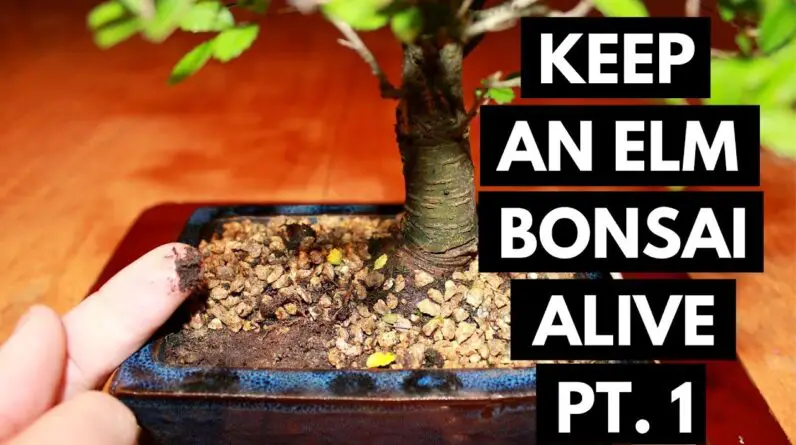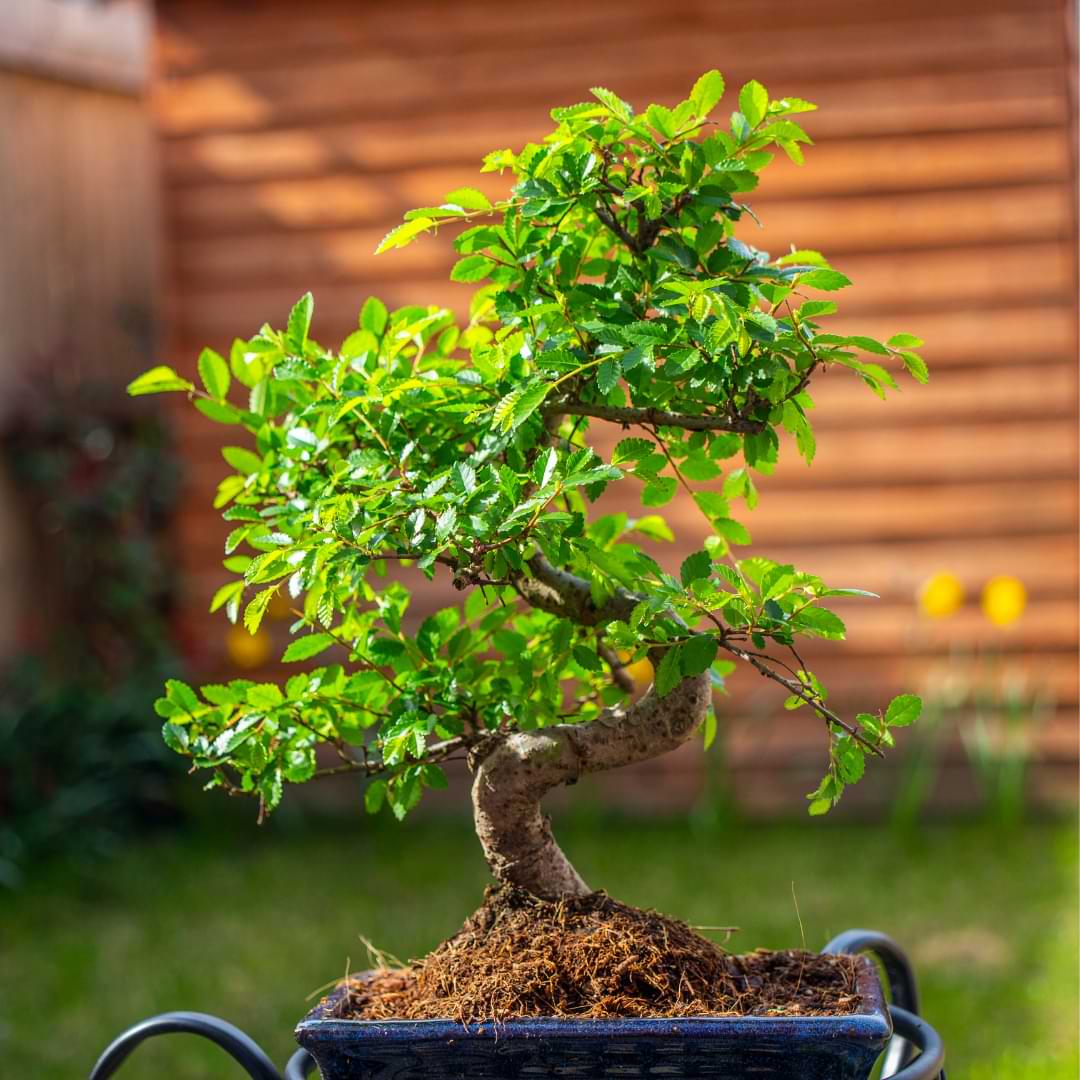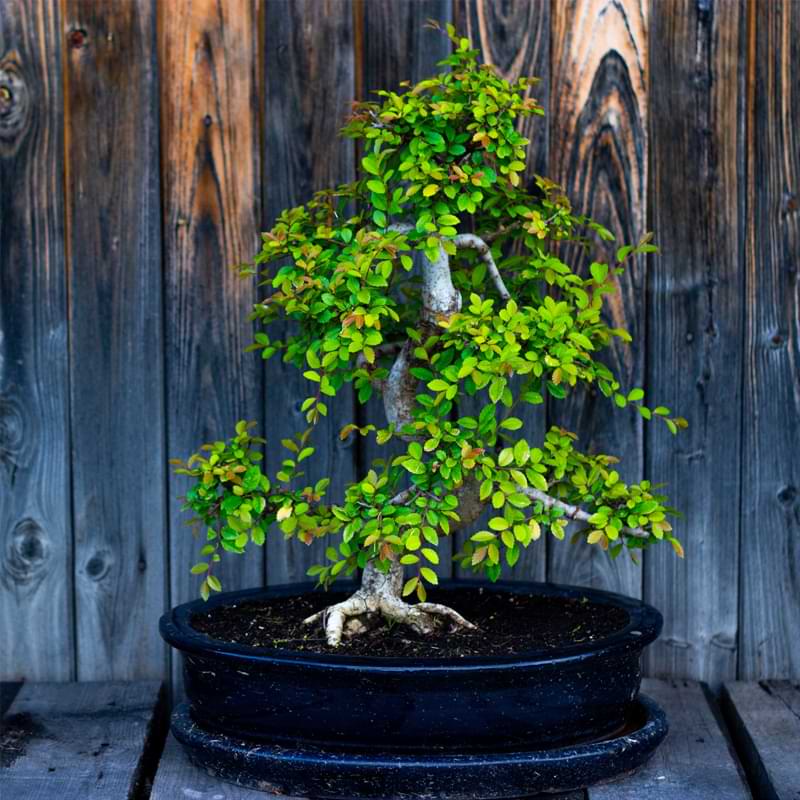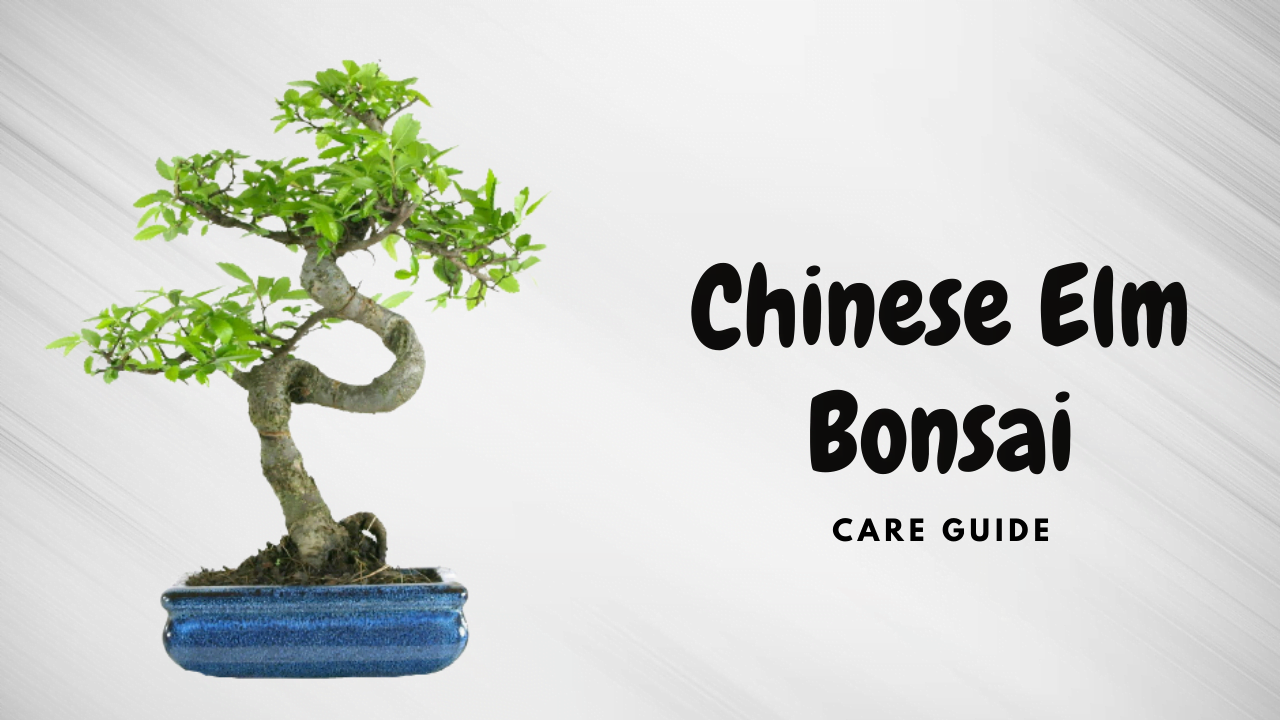
Looking to add a touch of elegance to your home or garden? Look no further than the Chinese Elm Bonsai. In our comprehensive guide, we’ll walk you through the entire process of selecting, growing, and caring for your very own Chinese Elm Bonsai.
From expert opinions and research to practical tips and techniques, we’ve got you covered. Join us as we delve into the fascinating world of bonsai trees and uncover the secrets to creating a stunning, long-lasting masterpiece. Whether you’re a beginner or an experienced enthusiast, this guide is sure to help you unlock the full potential of your Chinese Elm Bonsai.
So grab your gardening gloves and get ready to discover the art of bonsai!
Introduction to Chinese Elm Bonsai
What is Chinese Elm Bonsai?
Chinese Elm Bonsai, also known as Ulmus parvifolia, is a popular and widely cultivated bonsai tree. It is native to East Asia and is highly valued for its small, delicate leaves, naturalistic growth habit, and ability to thrive in a variety of environments. Chinese Elm Bonsai trees are known for their resilience and adaptability, making them an excellent choice for both beginners and experienced bonsai enthusiasts.
The History of Chinese Elm Bonsai
The art of bonsai has a rich history that dates back thousands of years. It originated in China and later spread to Japan, where it became deeply entrenched in their cultural practices. Chinese Elm Bonsai has played a significant role in this history, with records showing that it was cultivated in China as early as the Tang Dynasty (618-907 AD). The Chinese tradition of bonsai cultivation has heavily influenced the development of the Japanese bonsai style, and Chinese Elm Bonsai continues to be widely appreciated and grown throughout the world today.

Selecting a Chinese Elm Bonsai
Choosing the Right Chinese Elm Bonsai
When selecting a Chinese Elm Bonsai, it is important to consider several factors. Firstly, assess the overall health of the tree. Look for clear signs of vitality, such as vibrant foliage, a well-developed root system, and strong branches. Avoid trees with yellowing leaves, weak growth, or signs of disease or pest infestation.
Secondly, consider the style and shape of the bonsai. Chinese Elm Bonsai lends itself well to a variety of styles, including formal upright, informal upright, slanting, cascading, and semi-cascade. Choose a bonsai that reflects your personal aesthetic preferences and fits within the desired style.
Lastly, evaluate the size of the bonsai. Consider the available space in your home or garden and choose a size that suits your needs. Keep in mind that smaller bonsai trees are generally easier to care for and transport, while larger ones can make a more significant visual impact.
Considerations for Buying a Chinese Elm Bonsai
When purchasing a Chinese Elm Bonsai, it is essential to buy from a reputable bonsai nursery or seller. Ensure that the seller has extensive knowledge and experience with bonsai cultivation and can provide accurate information about the tree’s history, care requirements, and any specific challenges it may have.
Ask questions about the bonsai’s age, training, and any previous styling or pruning that has been done. It is also helpful to inquire about the specific needs of the Chinese Elm Bonsai variety you are considering, as different cultivars may have slightly different care requirements.
Inspect the bonsai carefully before making a purchase. Look for a well-balanced, visually appealing composition that captures the essence of a mature tree. Check for signs of good care, such as properly groomed foliage, well-formed branches, and a strong root system. Avoid trees with evidence of poor pruning or wiring techniques and those that appear weak or sickly.

Growing Chinese Elm Bonsai
Understanding Chinese Elm Bonsai’s Growing Requirements
Chinese Elm Bonsai thrives in a wide range of growing conditions, making it an ideal choice for bonsai enthusiasts of all levels. It prefers a bright, sunny location but can tolerate partial shade. Ideally, the temperature should be moderate and consistent, with a slight drop in winter to encourage dormancy.
The soil should be well-draining to prevent waterlogged roots. A mixture of bonsai soil, such as akadama, pumice, and lava rock, works well for Chinese Elm Bonsai. It is important to ensure that the soil is consistently moist, but not excessively wet.
Potting and Repotting Chinese Elm Bonsai
Chinese Elm Bonsai should be repotted every two to three years, typically in early spring before new growth begins. Repotting helps refresh the soil, encourages healthier root growth, and allows for pruning and shaping of the root system.
To repot, carefully remove the tree from its current pot, gently untangle the roots, and trim any overly long or damaged roots. Place the bonsai in a new, slightly larger pot, ensuring that the tree is centered and stable. Fill the remaining space with fresh bonsai soil, gently compacting it around the roots.
Watering Chinese Elm Bonsai
Watering is a crucial aspect of Chinese Elm Bonsai care. The soil should be kept evenly moist, but not saturated. Monitor the moisture level regularly by inserting a finger or chopstick into the soil. If it feels dry, it is time to water the tree.
Water thoroughly until the excess water drains out of the pot’s drainage holes. Avoid allowing the bonsai to sit in a saucer of water, as this can lead to root rot. Adjust the frequency of watering based on the weather, season, and individual tree’s needs.
Fertilizing Chinese Elm Bonsai
Fertilizing is necessary to provide Chinese Elm Bonsai with the nutrients it needs for healthy growth. Use a balanced, slow-release fertilizer or a liquid bonsai fertilizer with a diluted concentration. Apply the fertilizer during the growing season, typically from spring to autumn, following the instructions provided by the manufacturer.
It is important not to over-fertilize, as this can cause salt buildup in the soil and damage the roots. Regularly monitor the health of the bonsai and adjust the fertilizer application as needed.
Pruning and Wiring Chinese Elm Bonsai
Pruning and wiring are essential techniques for shaping and maintaining the desired form of Chinese Elm Bonsai. Pruning should be done throughout the year to remove dead or diseased branches, maintain appropriate tree shape, and encourage new growth.
Wiring can be used to bend and shape branches, creating the desired aesthetic appeal. Use bonsai wire of an appropriate thickness to avoid damaging the branches. Take care to wrap the wire gently around the branch, ensuring that it is firmly secured but not too tight.

Caring for Chinese Elm Bonsai
Light and Temperature Requirements for Chinese Elm Bonsai
Chinese Elm Bonsai thrives in bright, indirect light. Place the bonsai near a window with ample natural light, but avoid exposing it to direct sunlight for extended periods, as this can scorch the leaves. Consider using a grow light if natural light is limited.
Regarding temperature, Chinese Elm Bonsai prefers a moderate, consistent climate. It can tolerate a range of temperatures but should be protected from extreme cold or heat. During the winter, provide a cooler environment to promote dormancy and prevent premature bud development.
Pest and Disease Control for Chinese Elm Bonsai
While Chinese Elm Bonsai is generally resilient, it may still be susceptible to pests and diseases. Common pests include aphids, mites, and scale insects. Regularly inspect the bonsai for any signs of infestation, such as discolored leaves, webbing, or sticky residue. Treat affected trees promptly with appropriate insecticidal sprays or other remedies recommended by bonsai experts.
Diseases such as root rot, powdery mildew, or fungal infections can also occur. Maintain good ventilation and avoid over-watering to prevent these issues. If disease symptoms appear, remove affected parts, and treat with appropriate fungicides or remedies.
Seasonal Care for Chinese Elm Bonsai
Chinese Elm Bonsai requires specific care during each season. In spring, focus on promoting new growth by providing adequate light, water, and fertilization. Prune and wire the bonsai as needed to shape and maintain its form.
In summer, protect the bonsai from excessive heat and provide shade if necessary. Increase watering frequency to compensate for evaporation and ensure the soil stays consistently moist. Watch for signs of pests or diseases and address them promptly.
Autumn is a crucial time for Chinese Elm Bonsai as it prepares for dormancy. Reduce watering and gradually lower the temperature to mimic natural seasonal changes. Remove fallen leaves and debris to prevent pests and diseases.
During winter, protect the bonsai from freezing temperatures by providing appropriate insulation or bringing it indoors. Limit watering to prevent over-saturation, but ensure the soil does not dry out completely.

Advanced Techniques for Chinese Elm Bonsai
Air Layering Chinese Elm Bonsai
Air layering is a propagation technique used to create new Chinese Elm Bonsai trees. It involves making a small cut in a healthy branch, removing a section of bark, and applying rooting hormone. The exposed area is then wrapped with moist sphagnum moss and covered with plastic wrap to create a mini greenhouse effect. Roots will eventually form in the moss, and the new plant can be separated and potted once established.
Grafting Techniques for Chinese Elm Bonsai
Grafting is another advanced technique used to combine two different varieties of Chinese Elm Bonsai onto a single tree. It involves attaching a branch or bud from one tree onto another, allowing them to fuse and grow together. Grafting can be used to create unique and aesthetically pleasing bonsai specimens by combining desirable characteristics of different cultivars.
Styling and Designing Chinese Elm Bonsai
Styling and designing Chinese Elm Bonsai is where the creativity and artistry of bonsai truly come to life. This advanced technique involves carefully shaping the tree’s branches, foliage, and overall form to create a visually appealing composition.
Bonsai styling can be achieved through pruning, wiring, and selective growth techniques. It requires a keen eye for balance, proportion, and harmony. Consider studying established bonsai styles and techniques, attending workshops or classes, and experimenting with different designs to develop your own unique style.

Troubleshooting Common Issues with Chinese Elm Bonsai
Yellowing Leaves
Yellowing leaves in Chinese Elm Bonsai can be caused by various factors, including over-watering, under-watering, nutrient deficiencies, pests, or diseases. Evaluate the tree’s watering and fertilization practices and adjust as necessary. Inspect the bonsai for signs of pest infestation or disease and treat accordingly. Make sure the bonsai is in a suitable environment with adequate light levels.
Root Rot
Root rot occurs when the roots of Chinese Elm Bonsai become waterlogged and suffocate due to poor drainage or over-watering. To prevent root rot, ensure the bonsai is potted in well-draining soil and avoid over-watering. If root rot is suspected, carefully remove the bonsai from its pot, trim away infected roots, and repot with fresh, well-draining soil.
Branch Dieback
Branch dieback in Chinese Elm Bonsai can be caused by various factors, including disease, pest infestation, improper pruning techniques, or environmental stress. Inspect the bonsai for signs of pests or disease, and treat accordingly. Evaluate pruning techniques and ensure they are done correctly to avoid injuring the branches. Assess the bonsai’s environment and make any necessary adjustments to light, temperature, or humidity levels.
By following these comprehensive guidelines for selecting, growing, and caring for Chinese Elm Bonsai, you can embark on an enriching and rewarding journey in the art of bonsai cultivation. Remember to be patient, observe the specific needs of your bonsai tree, and embrace the creative process of shaping and nurturing a miniature masterpiece. Happy bonsai growing!


